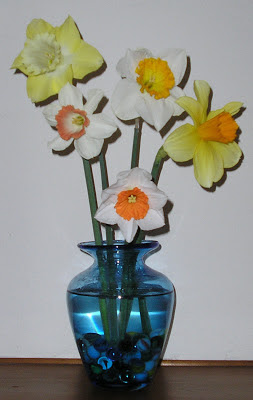People are often confused about when and how much to prune their trees in the summer. Prune too much and you can take away too much of the tree canopy when the trunk and branches need it for protection from sunburn. Prune too little and the tree can quickly become overgrown, requiring more severe pruning later on. There are plenty of places to read up on how to prune correctly but I've found that nothing beats seeing it done by a pro, preferably in a hands-on setting. Here's your opportunity to do that--two sets of workshops that will get your summer pruning skills up to snuff (or at least considerably improved).
Ann Ralph, formerly of Berkeley Horticultural Nursery, has four workshops scheduled in back yards around the bay area to show you how to
summer-prune your fruit trees. I attended a brief pruning workshop that Ann did at Berkeley Hort a few years back and came away after one hour feeling very confident about pruning my trees. Here are the dates and times:
For more information about the locations and to register, visit Ann's website at
www.littlefruit.tree.com, email her at
littlefruittree@gmail.com, or call her at 209-296-5797.
If you've planted a new tree in the last year or two, you're probably aware that correct pruning in these formative years can make the difference between a beautiful, healthy tree at maturity, or a problematic and potentially hazardous eyesore. Learn the ins and outs of the art of young tree pruning from Brian Kempf, the Director of the Urban Tree Foundation. This workshop, sponsored by Canopy of Palo Alto, will include 1.5 hours of classroom training and 2.5 hours of hands-on field training. No experience is required, but if you do have pruning experience, are a landscape professional, or an arborist, great! CEUs will be available for ISA certified arborists and tree workers. The workshop will take place on June 15th, 8:30 a.m. to 12:30 p.m. at Nixon Elementary, 1711 Stanford Avenue in Stanford.
The workshop itself is free but they do ask that if you attend the workshop that you commit to volunteering at one of the follow-up volunteer tree care work days where you can practice your new pruning skills on the following dates:
- Saturday, June 22nd 9am-12pm
- Saturday, June 29th 9am-12pm
- Saturday, July 13th 9am-12pm
- Thursday, July 27th, 6pm-8pm
These events will give you hands-on training and provide a service to the community. Pruning shears and gloves will be available, but if you have your own, you should bring them.
To register for the Art of Young Tree Pruning Workshop,
click here or email
Michael@canopy.org.

 Need one final down-to-the-wire Christmas gift for that special gardener in your life (even if that's yourself!)? Give a ticket to the San Francisco Flower & Garden Show! The show will be held March 19-23, 2014 at the San Mateo Event Center and early-bird purchases of one-day tickets can be had for as little as $16. Next year's show is under new ownership and from what I hear, there will be some welcome changes to this show that, although fun, was maybe getting a bit stale. Some of the changes include improvements to the presentation of the display gardens and special workshops, including two garden photography workshops with the amazing photographers Saxon Holt and David Perry (separate fee applies for these workshops). What gardener wouldn't like to find this ticket in her stocking? Bonus: You don't even have to get out of your pajamas to purchase! Just click here.
Need one final down-to-the-wire Christmas gift for that special gardener in your life (even if that's yourself!)? Give a ticket to the San Francisco Flower & Garden Show! The show will be held March 19-23, 2014 at the San Mateo Event Center and early-bird purchases of one-day tickets can be had for as little as $16. Next year's show is under new ownership and from what I hear, there will be some welcome changes to this show that, although fun, was maybe getting a bit stale. Some of the changes include improvements to the presentation of the display gardens and special workshops, including two garden photography workshops with the amazing photographers Saxon Holt and David Perry (separate fee applies for these workshops). What gardener wouldn't like to find this ticket in her stocking? Bonus: You don't even have to get out of your pajamas to purchase! Just click here.



























